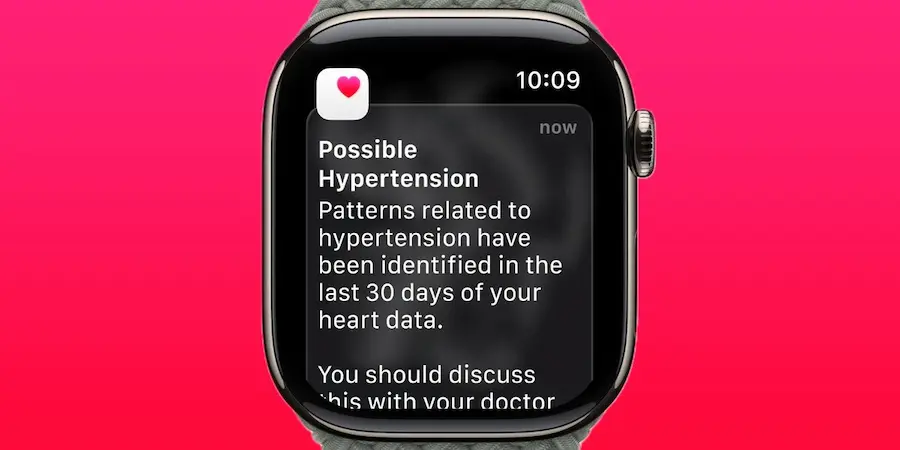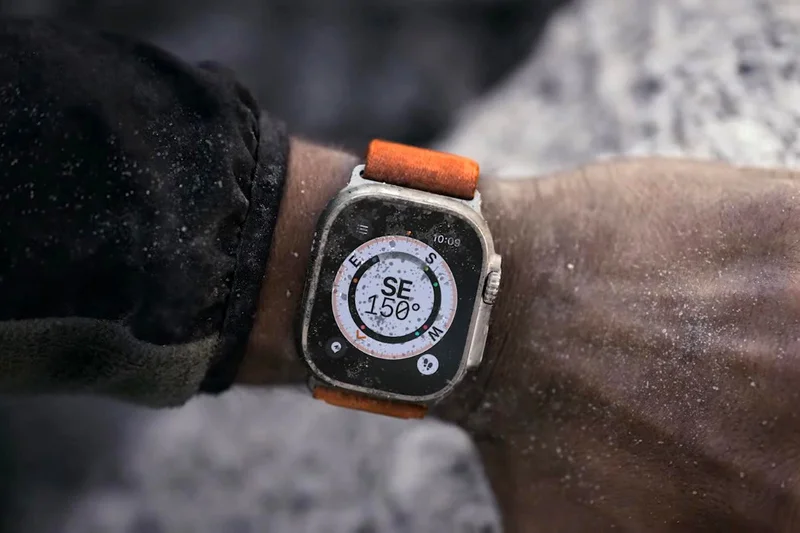Apple adds another health feature to its smart wrist: the Apple Watch will be able to notify you if it detects signs consistent with hypertension, and it does so with the approval of the U.S. Food and Drug Administration (FDA) granted on September 11. Note, it is not a blood pressure monitor nor does it provide blood pressure readings; its goal is to identify patterns that, over time, could point to high blood pressure. The idea is to provide an early warning and a report so the user can talk with their doctor and undergo an appropriate evaluation. Isn’t that a natural evolution for a wearable that already monitors your heart daily?
How it works and what it is (and isn’t) intended to measure
The new feature relies on the Apple Watch optical heart rate sensor, which analyzes how blood vessels contract and expand in response to heartbeats. From that photoplethysmography and with data accumulated over days, the watch is able to detect signals consistent with hypertension and send a notification. At no time does it record blood pressure numbers or issue diagnoses; its role is advisory and preventive, generating a report that you can share with your healthcare professional.
FDA authorization comes after a series of studies with thousands of adults. In one of them, more than 2,000 people without hypertension wore the watch 12 hours a day for nearly a month and, in addition, had their blood pressure taken with an upper-arm cuff twice a day. The result was decisive: the watch’s notification to detect signs of high blood pressure was as accurate as the cuff when it came to identifying indications. In other words, it does not replace the cuff, but its early-warning capability has been supported by evidence.
That said, it’s important not to confuse capabilities. The American Heart Association (AHA) and the American College of Cardiology (ACC) guidelines do not yet consider wrist devices validated tools to measure and monitor blood pressure. An algorithm based on optical signals does not replace a validated device for obtaining clinical figures.
Why it matters: the challenge of hypertension
Hypertension is a silent, widespread problem. According to the AHA, around half of adults in the U.S. have high blood pressure and a significant proportion don’t even know it; in fact, only about a quarter keep it under control. When uncontrolled, elevated blood pressure puts constant strain on the arteries that can weaken the heart and lead to serious events such as stroke, heart attacks, or kidney disease. The health consequences of hypertension have been estimated at around $131 billion a year, a figure that speaks for itself.

Awareness and early diagnosis make a difference. As Dr. Daniel Jones, chair of the writing committee for the upcoming AHA/ACC blood pressure management guidelines (who did not participate in the development of the Apple Watch feature), points out, we have long known that controlling blood pressure reduces the risk of heart disease, stroke, and chronic kidney disease, and that there is even data linking blood pressure control to a lower likelihood of dementia. That’s why it’s crucial that, even in young adults, blood pressure be measured at least once a year with a validated device. In everyday terms: just as you would calibrate a sensor on a Raspberry Pi to trust its readings, here you need an approved measurement to make clinical decisions.
Additionally, there are effective tools to regain control: adjust your diet with less salt, lose excess weight, and increase physical activity to strengthen the heart and blood vessels. Medications, when prescribed, also help in many cases; the key is combining habits and professional follow-up.
Availability, best practices, and how to make the most of it
Apple will roll out this feature on the Apple Watch Series 9 and Apple Watch Ultra 2, as well as on their more recent models, in more than 150 countries. When it arrives, its value will be in offering context and an early alert that encourages you to act. However, and this is crucial, the AHA and ACC guidelines do not consider these watches as validated methods to measure blood pressure; therefore, it’s not advisable to use their alerts as the sole source of information about your cardiovascular health.
What do experts recommend? If you receive a notification of possible signs of hypertension, verify that information with validated tools: an upper-arm cuff at the doctor’s office, at the pharmacy, or a certified home blood pressure monitor. This will minimize the risk of false positives or false negatives and give you an accurate picture of your blood pressure. Then, with reliable data, you can decide with your doctor the next steps.
In practice, this Apple Watch feature can be the nudge needed to start health conversations we sometimes postpone. Use it as a proactive reminder, combine it with lifestyle changes —less sodium, more movement— and have annual checks with a validated device. Consumer technology is advancing at a breakneck pace and, although it doesn’t replace clinical care, it can become a powerful ally to raise awareness and act in time. And that is probably the best notification we can receive.

